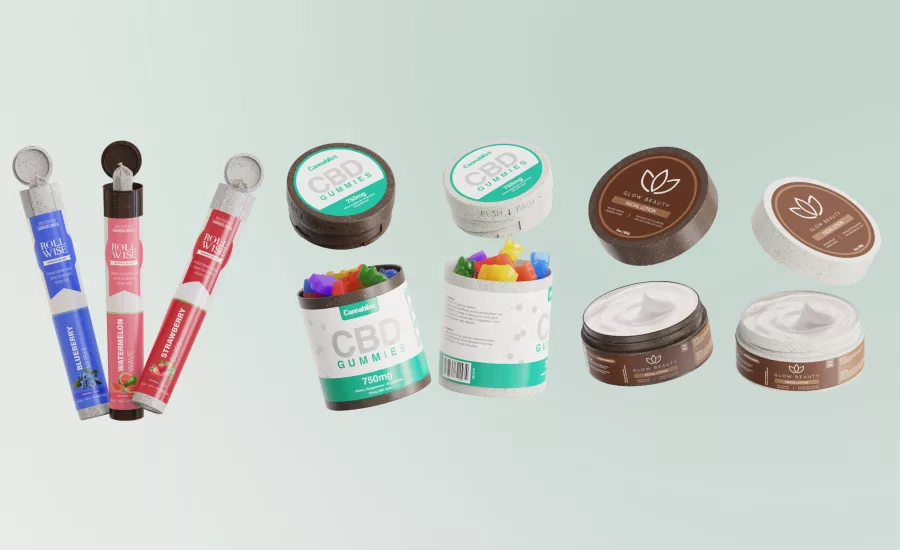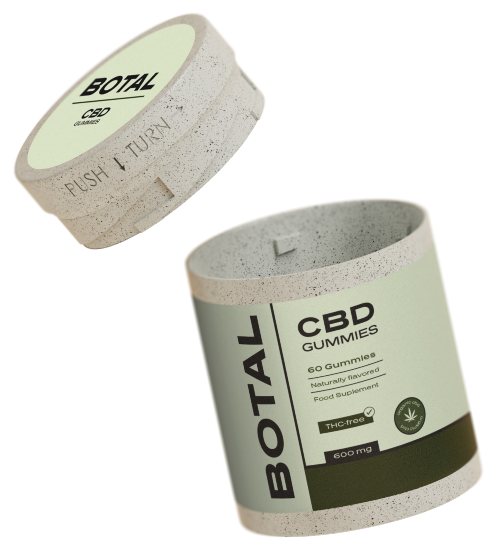How Hempak uses hemp to create sustainable cannabis packaging
Company’s packaging solutions are biodegradable, recyclable.

Photo from Hempak.
Manufacturers across industries are seeking ways to be more sustainable, and the cannabis industry is no different.
One area where sustainability comes into play is packaging, says Ryan Zvibleman, sales, Hempak. He noted manufacturers are looking for more sustainable materials, and hemp fits the bill, thanks to its ability to biodegrade and absorb carbon dioxide.
Cannabis Products Insider recently spoke to Zvibleman about hemp as a packaging material, Hempak's patent-pending child-resistant jars, and the need for sustainable cannabis packaging.
CPI: Why do you think the cannabis industry should pursue more sustainable packaging options?
RZ: Because we have to protect it from getting into children’s hands, and having all the information about what’s in it, it ends up being a lot of packaging — at times too much packaging. Sometimes you’re going to have a jar inside a bag, so it ends up being so much packaging that goes into a landfill. It’s really important that we make packaging that’s much more sustainable, better for the environment, so every time someone’s ordering something, we’re not making a mess of our planet and adding so much CO2 to the atmosphere.
CPI: What makes hemp an ideal packaging material?
RZ: When harvesting cannabis, a lot of times the stalk of the plant gets discarded, so we’re using part of the hemp plant to make materials out of it. Not only that, hemp is one of the greatest absorbers of carbon, and it’s one of the easiest plants to grow. It doesn’t need much nutrients or stuff like that. It’s one of the best ways to take carbon out of the atmosphere and make a material or plastic out of, which is exactly what we’re doing.
CPI: Where do you source the hemp?
RZ: All over the country. We’re trying to help different farmers in many locations. We have a lot of partners. It’s been quite exciting. A lot of the farmers that are growing it for us are also using it as packaging as well for the hemp that they’re selling. It’s really a cool cycle.
CPI: Can you describe the packaging manufacturing process?
RZ: We make beads of plastic out of the hemp. It’s not all hemp — 25% is hemp plastic and then we use virgin or recycled plastic for the rest. We don’t just do stuff like jars. We can make anything that you can make out of plastic. You name the product — whether it’s trays or boards — we can make it. But really, reducing the total plastic that you’re using, especially with something that takes carbon out of the atmosphere, is what you need to do.
CPI: Our understanding is that these materials are biodegradable. Can you discuss the biodegradation process?
RZ: The hemp itself obviously can biodegrade since it’s a plant, but one nice thing about it too, is that even throughout the lifetime of the product, it’s still absorbing CO2, so that part’s really nice. We also have a bio-additive that helps break down everything in the jar as soon as it gets into the soil.
CPI: With packaging the concern is protecting the stability and shelf-life of the product. How do the hemp materials handle light and oxygen?
RZ: It handles everything very well. It has similar properties to a regular jar. One of the harder parts of manufacturing is that it is a softer plastic. It’s a slower manufacturing process, but for us, it’s worth the time to make better packaging. Because it’s opaque, and you can’t see through it, light’s not penetrating it, either.
CPI: How’s the recyclability of these packaging products?
RZ: They are fully recyclable. They are a No. 7 recyclable material. Some plants are able to take that material and recycle them, but they’re still going to break down wherever they go.

CPI: Is there a greater cost associated with these materials, or are they comparable to what’s on the market?
RZ: It’s going to be slightly higher. We’ve scaled a lot, which has helped us bring down our price considerably. A lot of times when people are looking at a bio-type material, they’re looking at 3-4X — it can go crazy. We’re usually about 25% more expensive. As we grow and the amount of material we make grows, we should be able to reduce that price so we’re comparable.
CPI: Can you describe the process for including child-resistance components? Was it difficult with the materials?
RZ: It was difficult. We did have to go through a lot of child-resistance testing. There were challenges with that, considering the materials are softer. We did quite a bit of engineering to make our jars and tubes what they are today. We have patent-pending designs on our child-resistant jar. Most jars have three components to it: the jar, the cap, and inside the cap there’s another piece of plastic. We were able to make a jar that only has two, so it’s easier to manufacture and also uses less material. That part is really unique about the jars themselves.
CPI: Does your customer base include brands seeking to make sustainability a part of their mission, or are they more traditional brands you’re engaging with?
RZ: We’re seeing stuff across the board. We’re working with a lot of the top cannabis companies and distributors, and we’re also working with a lot of stuff in pharmaceuticals and cosmetics. We really see the industry start to move toward sustainable materials, and people are making it part of their mission. It does really help. We see a lot of brands trying to change this industry, and we’re really proud of this industry as a whole. I like to say that the cannabis side is a lot more green than other industries, and people care about it a lot, so we’re seeing a lot of improvement.
CPI: Is there anything else you’d like to add?
RZ: We have a lot more products coming out soon that’ll help the industry. We manufacture these in the United States. A lot of plastic, and even stuff like glass, comes from overseas. Not only the way they’re manufacturing it, but it has to come on a container, and from that container it’s got to go on a truck, and it went a truck before it even went on that original ship, so there’s so much fuel being used from China and other countries to America. We manufacture all of our products here, so we really save on CO2 just from the transportation aspect as well.
This article was originally posted on www.cannabisproductsinsider.com
Looking for a reprint of this article?
From high-res PDFs to custom plaques, order your copy today!








